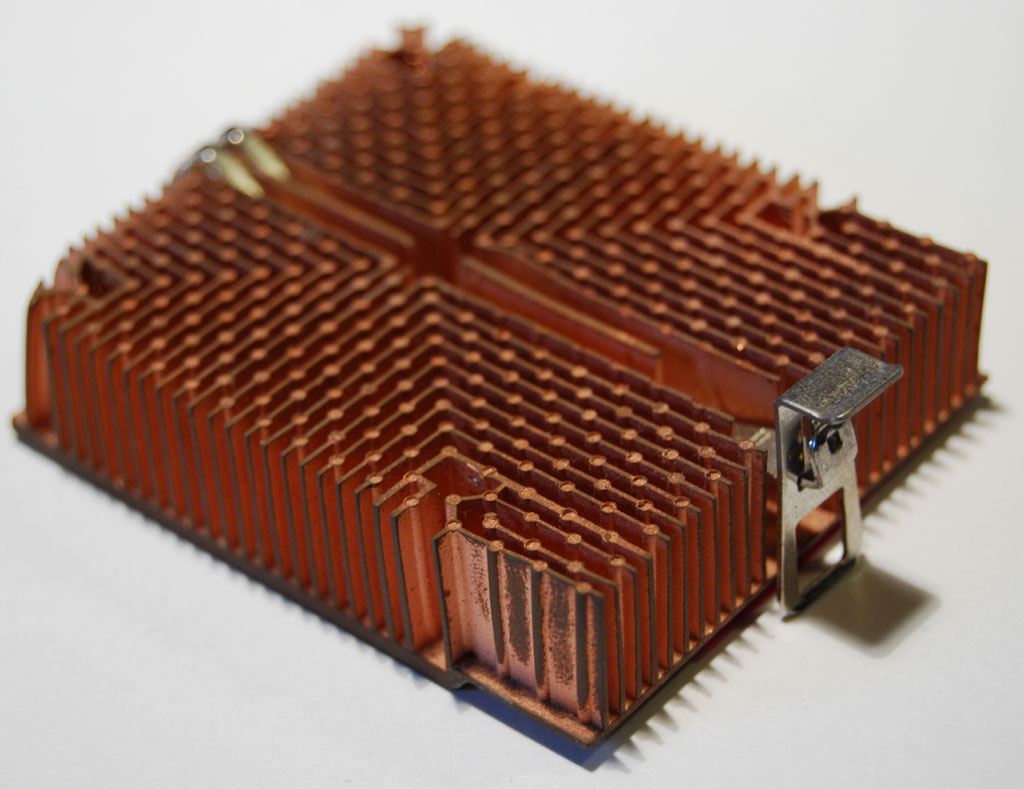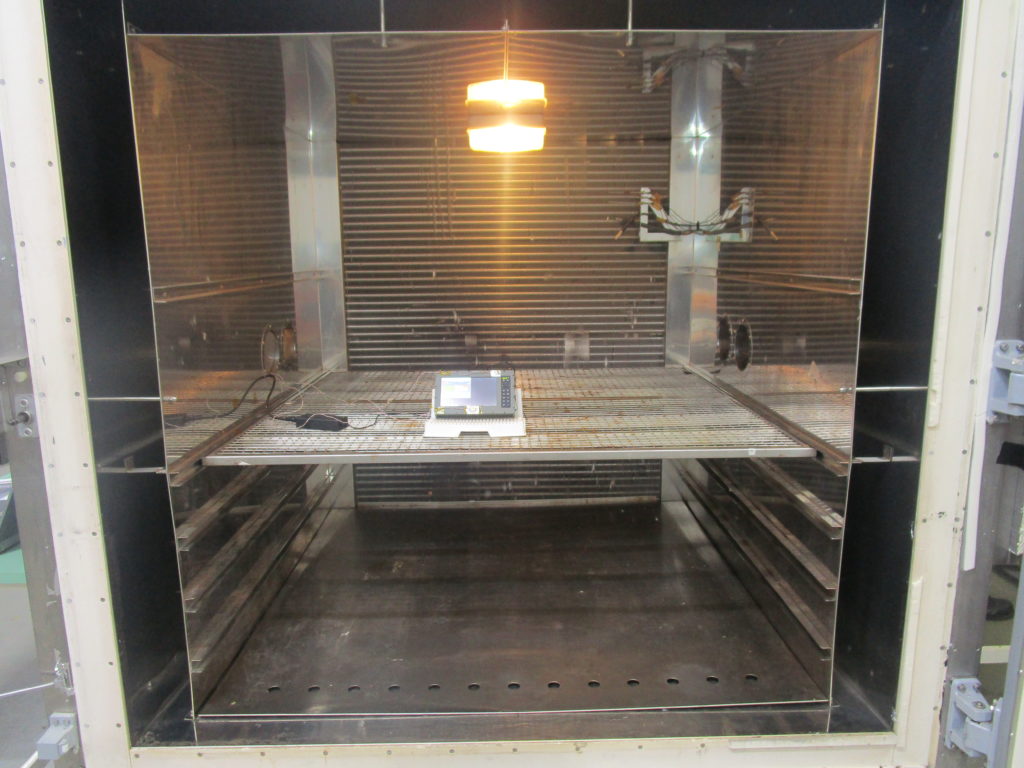Heat sinks are essential cooling systems for modern computers, but pose challenges for military operators in terms of size, weight and power (SWaP) demands, resilience and ruggedness. How can armed forces secure the benefits of heat sink technology, while mitigating its problems?

Gohnarch, CC BY-SA 3.0 <http://creativecommons.org/licenses/by-sa/3.0/>, via Wikimedia Commons
Military computing faces unique demands when it comes to heat. This often stems from a range of almost contradictory requirements.
Militaries need their systems to meet stringent size, weight and power (SWaP) requirements, lowering the load on personnel and vehicles. At the same time, they must be sufficiently rugged to meet the requirements of harsh environments. These environments can often be hot and humid, so the systems must be kept cool enough to function, without causing damage to the CPUs and GPUs that need to perform their functions.
The computers, then, must be small and light, while also staying tough and cool. But while they must be small, they also need to be powerful, performing tasks involving intensive processing, for instance. How, then, can they be small, powerful and tough, while remaining cool enough to function?
Passive heat sinks and the other cooling methods
Typical computers today feature a heat sink attached to a computer chip, designed to remove heat from the system and prevent overheating, which can impair the system. So what do they look like, and how exactly do they work?
Passive heat sinks have the appearance of a kind of hedgehog and are cuboid in shape, comprising an array of prongs that sit on top of a CPU or chip. Similar in concept to a radiator, the prongs increase the surface area; the heat rises through these prongs, and a fan blows air across the structure to cool it down, removing heat from the system.
Some computers can also feature heat pipes, which transfer heat from one part of the processor to the heat sink. If there is another chip or processor that is not suited to having a heatsink of its own, the heat is transferred across the pipes to the heat sink.
For militaries, standard approaches to cooling can pose several problems. Their computers should be a “solid state system”, which is effectively a PC with no moving parts and will therefore be more rugged than a standard off-the-shelf computer. A fan is a moving part, meaning the system is no longer solid state and is therefore less reliable.
Additionally, fans are internal to the laptop, so are difficult to replace. They also require a hole in the system to access air, which makes it difficult to seal the computer properly. That makes the system vulnerable to water, dust and sand ingression and other threats; it is possible to use a filter to address this problem, but this simply adds another part to the computer that will need to be serviced and maintained.
By failing to address threats like sand and dust ingression, systems may not perform to the demands expected by militaries. These requirements are encapsulated and enforced through such standards as the US military’s ‘Environmental Engineering Considerations and Laboratory Tests’ or MIL-STD-810, which sets the standard for environmental testing of US military equipment and has been adopted by other militaries around the world. Other standards to keep in mind include the UK’s Defence Standard 00-35 – Def Stan 00-35 – the most well-known British environmental standardisation programme.
 What’s more, a hole in the system will compromise its ability to meet Electromagnetic Compatibility (EMC) standards. This means other systems could be affected through radiated emissions, while the computer itself could be affected by other systems – like radios – through radiated susceptibility. Electronic noise also creates the potential for electronic warfare (EW) threats of the kind GRiD Defence Systems addresses through its TEMPEST accreditation.
What’s more, a hole in the system will compromise its ability to meet Electromagnetic Compatibility (EMC) standards. This means other systems could be affected through radiated emissions, while the computer itself could be affected by other systems – like radios – through radiated susceptibility. Electronic noise also creates the potential for electronic warfare (EW) threats of the kind GRiD Defence Systems addresses through its TEMPEST accreditation.
Read more: TEMPEST Electronics Testing: Keeping Your Secrets Secret
Fans are not an issue in commercial environments, but they can pose both resilience and security threats for militaries. Are there other choices that could provide an alternative? Water cooling could be an option, but this is highly expensive and aimed more at computers using significant amounts of power, like a commercial server, rather than deployable military laptops or tablets.
Chassis conduction
It is clear, then, that while heat sinks and fans are the optimal form of cooling for commercial computers, they pose significant challenges for military computing. Heat sinks, for instance, tend to be relatively large, meaning they take up significant amounts of space within the system and cases have to be large enough to support them.
Through our specialist engineering and manufacturing know-how, we approach this challenge differently and do not use traditional heat sinks that are seen in commercial computing.
At GRiD, we essentially turn the aluminium chassis into one large heat sink, avoiding the need for a large passive heat sink solution and the SWaP challenges that presents. This approach requires highly specialist engineering knowledge when it comes to designing the chassis and arranging the placement of internal components.
This presents militaries with numerous benefits. There are no fans and no water cooling. The system uses heat pipes to transfer processor heat from one side of the unit to another, essentially moving it to the side with more metal. There may be concerns that the chassis will grow hot, but this is managed by the selection of the processor installed.
Whether you use a seven-inch tablet or a 15-inch laptop, the concept is the same, providing armed forces with resilient, solid-state systems. This approach is operationally proven, with the company’s rugged and SWaP-optimised systems in service across a range of NATO nations. It has also met the most demanding environmental requirements, including IP67 and IP68 standards. Because the system is fully sealed with no holes, it meets standards around water submersion, dust and sand ingress, humidity, salt fog and driving rain. Again, these tests can be found in standards like Def Stan 00-35 and MIL-STD-810.
The systems are designed by our specialist engineering team here in the UK, with the unique aluminium chassis manufactured by our partners also based in-country. This provides a sovereign capability for the UK and negates supply chain worries, while it also means the company can push through design changes relatively easily unlike companies that have international suppliers.
As GRiD marks its 30th year in business, it continues to improve its designs, providing bespoke systems for military operators designed to meet their unique and challenging demands.
If you would like to discuss how to balance power and performance in rugged hardware, please get in touch on +44 (0)1628 810 230 or drop an email to sales@griduk.com.

